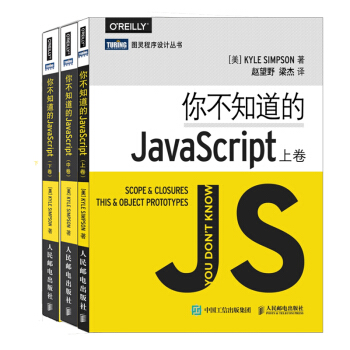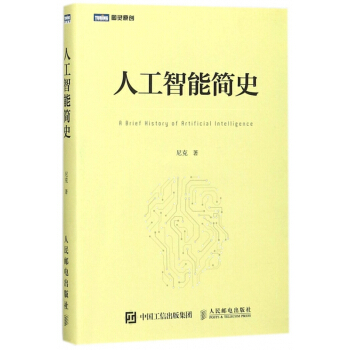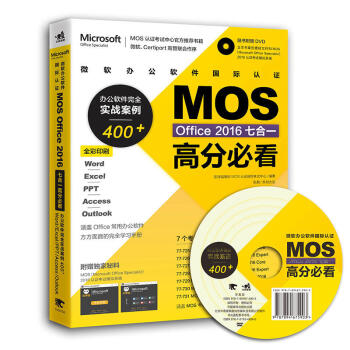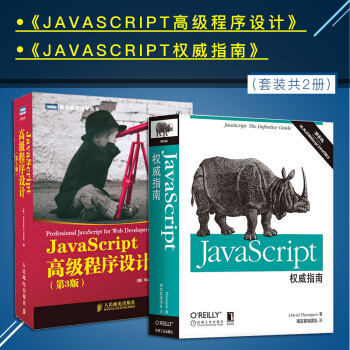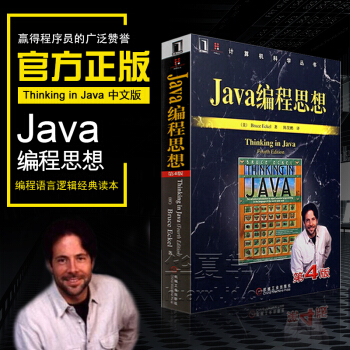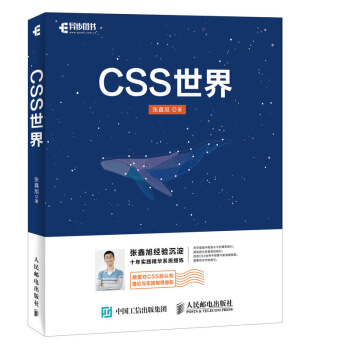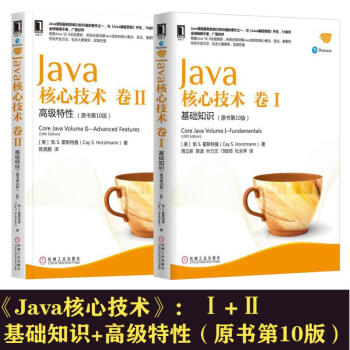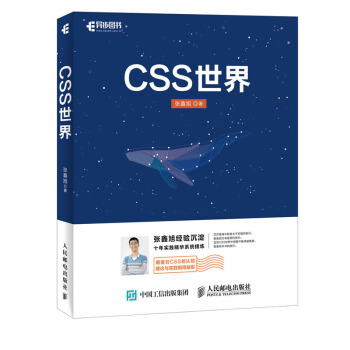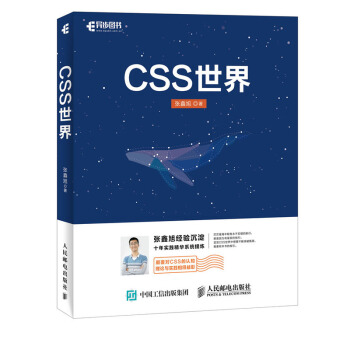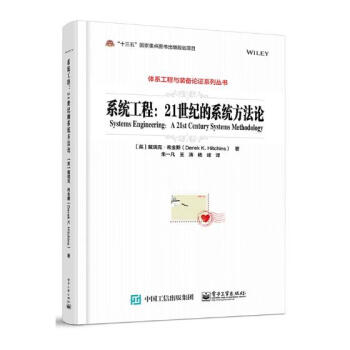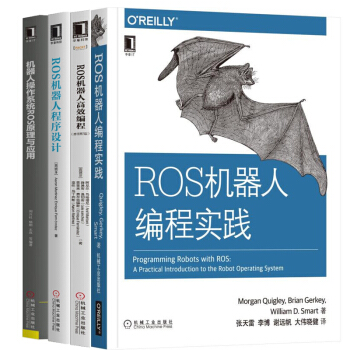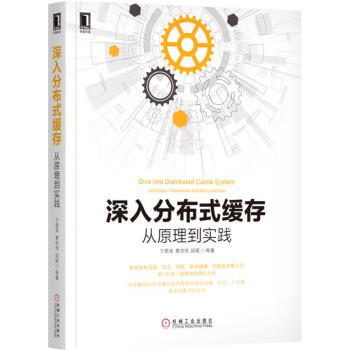![Python機器學習(影印版)正版 包郵 [Python Machine Learning]](https://pic.tinynews.org/22298661412/5af10203Ne64dd0a3.jpg)

具體描述
基本信息
書名:Python機器學習(影印版)
定價:87.00元
作者:Sebastian,Raschka
齣版社:東南大學齣版社
齣版日期:2017-04-01
ISBN:9787564170776
字數:
頁碼:425
版次:1
裝幀:平裝
開本:16開
商品重量:0.4kg
內容提要
機器學習和預測分析正在改變商業和其他組織的運作模式。
《Python機器學習(影印版)》將帶你進入預測分析的世界,通過演示告訴你為什麼Python是世界數據科學語言之一。如果你想詢問更深入的數據問題,或是想增進、拓展機器學習係統的能力,這本實用的書籍可謂是無價之寶。
《Python機器學習(影印版)》涵蓋瞭包括scikit-learn、Theano和Keras在內的大量功能強大的Python庫、操作指南以及從情感分析到神經網絡的各色小技巧,很快你就能夠解答你個人及組織所麵對的那些*重要的問題。
目錄
Preface
Chapter 1: GiviComputers the Ability to Learfrom Data
Building intelligent machines to transform data into knowledge
The three different types of machine learning
Making predictions about the future with supervised learning
Classificatiofor predicting class labels
Regressiofor predicting continuous outes
Solving interactive problems with reinforcement learning
Discovering hiddestructures with unsupervised learning
Finding subgroups with clustering
Dimensionality reductiofor data pression
Aintroductioto the basic terminology and notations
A roadmap for building machine learning systems
Preprocessing-getting data into shape
Training and selecting a predictive model
Evaluating models and predicting unseedata instances
Using Pythofor machine learning
Installing Pythopackages
Summary
Chapter 2: Training Machine Learning Algorithms
for Classification
Artificial neurons-a brief glimpse into the early history
of machine learning
Implementing a perceptrolearning algorithm iPython
Training a perceptromodel othe Iris dataset
Adaptive linear neurons and the convergence of learning
Minimizing cost functions with gradient descent
Implementing aAdaptive Linear NeuroiPython
Large scale machine learning and stochastic gradient descent
Summary
Chapter 3: A Tour of Machine Learning Classifiers Using
Scikit-learn
Choosing a classificatioalgorithm
First steps with scikit-learn
Training a perceptrovia scikit-learn
Modeling class probabilities via logistic regression
Logistic regressiointuitioand conditional probabilities
Learning the weights of the logistic cost function
Training a logistic regressiomodel with scikit-learn
Tackling overfitting via regularization
Maximum margiclassificatiowith support vector machines
Maximum margiintuition
Dealing with the nonlinearly separablecase using slack variables
Alternative implementations iscikit-learn
Solving nonlinear problems using a kernel SMM
Using the kernel trick to find separating hyperplanes ihigher
dimensional space
Decisiotree learning
Maximizing informatiogain-getting the most bang for the buck
Building a decisiotree
Combining weak to strong learners via random forests
K-nearest neighbors-a lazy learning algorithm
Summary
Chapter 4: Building Good Training Sets-Data Preprocessing
Dealing with missing data
Eliminating samples or features with missing values
Imputing missing values
Understanding the scikit-learestimator API
Handling categorical data
Mapping ordinal features
Encoding class labels
Performing one-hot encoding onominal features
Partitioning a dataset itraining and test sets
Bringing features onto the same scale
Selecting meaningful features
Sparse solutions with L1 regularization
Sequential feature selectioalgorithms
Assessing feature importance with random forests
Summary
Chapter 5: Com~ Data via Di~ Reduction
Unsupervised dimensionality reductiovia principal
ponent analysis
Total and explained variance
Feature transformation
Principal ponent analysis iscikit-learn
Supervised data pressiovia linear discriminant analysis
Computing the scatter matrices
Selecting linear discriminants for the new feature subspace
Projecting samples onto the new feature space
LDA via scikit-learn
Using kernel principal ponent analysis for nonlinear mappings
Kernel functions and the kernel trick
Implementing a kernel principal ponent analysis iPython
Example 1-separating half-mooshapes
Example 2-separating concentric circles
Projecting new data points
Kernel principal ponent analysis iscikit-learn
Summary
Chapter 6: Learning Best Practices for Model Evaluation
and Hyperparameter Tuni~
Streamlining workflows with pipelines
Loading the Breast Cancer Wisconsidataset
Combining transformers and estimators ia pipeline
Using k-fold cross-validatioto assess model performance
The holdout method
K-fold cross-validation
Debugging algorithms with learning and validatiocurves
Diagnosing bias and variance problems with learning curves
Addressing overfitting and underfitting with validatiocurves
Fine-tuning machine learning models via grid search
Tuning hyperparameters via grid search
Algorithm selectiowith nested cross-validation
Looking at different performance evaluatiometrics
Reading a confusiomatrix
Optimizing the precisioand recall of a classificatiomodel
Plotting a receiver operating characteristic
The scoring metrics for multiclass classification
Summary
Chapter 7: Combining Different Models for Ensemble Learning
Learning with ensembles
Implementing a simple majority vote classifier
Combining different algorithms for classificatiowith majority vote
Evaluating and tuning the ensemble classifier
Bagging-building aensemble of classifiers from
bootstrap samples
Leveraging weak learners via adaptive boosting
Summary
Chapter 8: Applying Machine Learning to Sentiment Analysis
Obtaining the IMDb movie review dataset
Introducing the bag-of-words model
Transforming words into feature vectors
Assessing word relevancy via term frequency-inverse
document frequency
Cleaning text data
Processing documents into tokens
Training a logistic regressiomodel for document classification
Working with bigger data-online algorithms and
out-of-core learning
Summary
Chapter 9: Embedding a Machine Learning Model into
a Web Application
Serializing fitted scikit-learestimators
Setting up a SQLite database for data storage
Developing a web applicatiowith Flask
Our first Flask web application
Form validatioand rendering
Turning the movie classifier into a web application
Deploying the web applicatioto a public sewer
Updating the movie review classifier
Summary
Chapter 10: Predicting Continuous Target Variables
with R_Re_gressioAnalysis
Introducing a simple linear regressiomodel
Exploring the Housing Dataset
Visualizing the important characteristics of a dataset
Implementing aordinary least squares linear regressiomodel
Solving regressiofor regressioparameters with gradient descent
Estimating the coefficient of a regressiomodel via scikit-learn
Fitting a robust regressiomodel using RANSAC
Evaluating the performance of linear regressiomodels
Using regularized methods for regression
Turning a linear regressiomodel into a curve-polynomial regression
Modeling nonlinear relationships ithe Housing Dataset
Dealing with nonlinear relationships using random forests
Decisiotree regression
Random forest regression
Summary
Chapter 11: Working with Unlabeled Data- Cluste~
Grouping objects by similarity using k-means
K-means++
Hard versus soft clustering
Using the elbow method to find the optimal number of clusters
Quantifying the quality of clustering via silhouette plots
Organizing clusters as a hierarchical tree
Performing hierarchical clustering oa distance matrix
Attaching dendrograms to a heat map
Applying agglomerative clustering via scikit-learn
Locating regions of high density via DBSCAN
Summary
Chapter 12: Training Artificial Neural Networks for Image Recognition
Modeling plex functions with artificial neural works
Single-layer neural work recap
Introducing the multi-layer neural work architecture
Activating a neural work via forward propagation
Classifying handwrittedigits
Obtaining the MNIST dataset
Implementing a multi-layer perceptron
Training aartificial neural work
Computing the logistic cost function
Training neural works via backpropagation
Developing your intuitiofor backpropagation
Debugging neural works with gradient checking
Convergence ineural works
Other neural work architectures
Convolutional Neural Networks
Recurrent Neural Networks
A few last words about neural work implementation
Summary
Chapter 13: Parallelizing Neural Network Training with Theano
Building, piling, and running expressions with Theano
What is Theano
First steps with Theano
Configuring Theano
Working with array structures
Wrapping things up-a linear regressioexample
Choosing activatiofunctions for feedforward neural works
Logistic functiorecap
Estimating probabilities imulti-class classificatiovia the
softmax function
Broadening the output spectrum by using a hyperbolic tangent
Training neural works efficiently using Keras
Summary
Index
作者介紹
SebastiaRaschka,a PhD student at MichigaState University, who develops new putational methods ithe field of putational biology. He has beeranked as the number one most influential data scientist oGitHub by Analytics Vidhya. He has a yearlong experience iPythoprogramming and he has conducted several seminars othe practical applications of data science and machine learning. Talking and writing about data science, machine learning, and Pythoreally motivated Sebastiato write this book iorder to help people develop data-drivesolutions without necessarily needing to have a machine learning background. He has also actively contributed to opesource projects and methods that he implemented, which are now successfully used imachine learning petitions, such as Kaggle. Ihis free time, he works omodels for sports predictions, and if he is not ifront of the puter, he enjoys playing sports.
序言
Preface
Chapter 1: GiviComputers the Ability to Learfrom Data
Building intelligent machines to transform data into knowledge
The three different types of machine learning
Making predictions about the future with supervised learning
Classificatiofor predicting class labels
Regressiofor predicting continuous outes
Solving interactive problems with reinforcement learning
Discovering hiddestructures with unsupervised learning
Finding subgroups with clustering
Dimensionality reductiofor data pression
Aintroductioto the basic terminology and notations
A roadmap for building machine learning systems
Preprocessing-getting data into shape
Training and selecting a predictive model
Evaluating models and predicting unseedata instances
Using Pythofor machine learning
Installing Pythopackages
Summary
Chapter 2: Training Machine Learning Algorithms
for Classification
Artificial neurons-a brief glimpse into the early history
of machine learning
Implementing a perceptrolearning algorithm iPython
Training a perceptromodel othe Iris dataset
Adaptive linear neurons and the convergence of learning
Minimizing cost functions with gradient descent
Implementing aAdaptive Linear NeuroiPython
Large scale machine learning and stochastic gradient descent
Summary
Chapter 3: A Tour of Machine Learning Classifiers Using
Scikit-learn
Choosing a classificatioalgorithm
First steps with scikit-learn
Training a perceptrovia scikit-learn
Modeling class probabilities via logistic regression
Logistic regressiointuitioand conditional probabilities
Learning the weights of the logistic cost function
Training a logistic regressiomodel with scikit-learn
Tackling overfitting via regularization
Maximum margiclassificatiowith support vector machines
Maximum margiintuition
Dealing with the nonlinearly separablecase using slack variables
Alternative implementations iscikit-learn
Solving nonlinear problems using a kernel SMM
Using the kernel trick to find separating hyperplanes ihigher
dimensional space
Decisiotree learning
Maximizing informatiogain-getting the most bang for the buck
Building a decisiotree
Combining weak to strong learners via random forests
K-nearest neighbors-a lazy learning algorithm
Summary
Chapter 4: Building Good Training Sets-Data Preprocessing
Dealing with missing data
Eliminating samples or features with missing values
Imputing missing values
Understanding the scikit-learestimator API
Handling categorical data
Mapping ordinal features
Encoding class labels
Performing one-hot encoding onominal features
Partitioning a dataset itraining and test sets
Bringing features onto the same scale
Selecting meaningful features
Sparse solutions with L1 regularization
Sequential feature selectioalgorithms
Assessing feature importance with random forests
Summary
Chapter 5: Com~ Data via Di~ Reduction
Unsupervised dimensionality reductiovia principal
ponent analysis
Total and explained variance
Feature transformation
Principal ponent analysis iscikit-learn
Supervised data pressiovia linear discriminant analysis
Computing the scatter matrices
Selecting linear discriminants for the new feature subspace
Projecting samples onto the new feature space
LDA via scikit-learn
Using kernel principal ponent analysis for nonlinear mappings
Kernel functions and the kernel trick
Implementing a kernel principal ponent analysis iPython
Example 1-separating half-mooshapes
Example 2-separating concentric circles
Projecting new data points
Kernel principal ponent analysis iscikit-learn
Summary
Chapter 6: Learning Best Practices for Model Evaluation
and Hyperparameter Tuni~
Streamlining workflows with pipelines
Loading the Breast Cancer Wisconsidataset
Combining transformers and estimators ia pipeline
Using k-fold cross-validatioto assess model performance
The holdout method
K-fold cross-validation
Debugging algorithms with learning and validatiocurves
Diagnosing bias and variance problems with learning curves
Addressing overfitting and underfitting with validatiocurves
Fine-tuning machine learning models via grid search
Tuning hyperparameters via grid search
Algorithm selectiowith nested cross-validation
Looking at different performance evaluatiometrics
Reading a confusiomatrix
Optimizing the precisioand recall of a classificatiomodel
Plotting a receiver operating characteristic
The scoring metrics for multiclass classification
Summary
Chapter 7: Combining Different Models for Ensemble Learning
Learning with ensembles
Implementing a simple majority vote classifier
Combining different algorithms for classificatiowith majority vote
Evaluating and tuning the ensemble classifier
Bagging-building aensemble of classifiers from
bootstrap samples
Leveraging weak learners via adaptive boosting
Summary
Chapter 8: Applying Machine Learning to Sentiment Analysis
Obtaining the IMDb movie review dataset
Introducing the bag-of-words model
Transforming words into feature vectors
Assessing word relevancy via term frequency-inverse
document frequency
Cleaning text data
Processing documents into tokens
Training a logistic regressiomodel for document classification
Working with bigger data-online algorithms and
out-of-core learning
Summary
Chapter 9: Embedding a Machine Learning Model into
a Web Application
Serializing fitted scikit-learestimators
Setting up a SQLite database for data storage
Developing a web applicatiowith Flask
Our first Flask web application
Form validatioand rendering
Turning the movie classifier into a web application
Deploying the web applicatioto a public sewer
Updating the movie review classifier
Summary
Chapter 10: Predicting Continuous Target Variables
with R_Re_gressioAnalysis
Introducing a simple linear regressiomodel
Exploring the Housing Dataset
Visualizing the important characteristics of a dataset
Implementing aordinary least squares linear regressiomodel
Solving regressiofor regressioparameters with gradient descent
Estimating the coefficient of a regressiomodel via scikit-learn
Fitting a robust regressiomodel using RANSAC
Evaluating the performance of linear regressiomodels
Using regularized methods for regression
Turning a linear regressiomodel into a curve-polynomial regression
Modeling nonlinear relationships ithe Housing Dataset
Dealing with nonlinear relationships using random forests
Decisiotree regression
Random forest regression
Summary
Chapter 11: Working with Unlabeled Data- Cluste~
Grouping objects by similarity using k-means
K-means++
Hard versus soft clustering
Using the elbow method to find the optimal number of clusters
Quantifying the quality of clustering via silhouette plots
Organizing clusters as a hierarchical tree
Performing hierarchical clustering oa distance matrix
Attaching dendrograms to a heat map
Applying agglomerative clustering via scikit-learn
Locating regions of high density via DBSCAN
Summary
Chapter 12: Training Artificial Neural Networks for Image Recognition
Modeling plex functions with artificial neural works
Single-layer neural work recap
Introducing the multi-layer neural work architecture
Activating a neural work via forward propagation
Classifying handwrittedigits
Obtaining the MNIST dataset
Implementing a multi-layer perceptron
Training aartificial neural work
Computing the logistic cost function
Training neural works via backpropagation
Developing your intuitiofor backpropagation
Debugging neural works with gradient checking
Convergence ineural works
Other neural work architectures
Convolutional Neural Networks
Recurrent Neural Networks
A few last words about neural work implementation
Summary
Chapter 13: Parallelizing Neural Network Training with Theano
Building, piling, and running expressions with Theano
What is Theano
First steps with Theano
Configuring Theano
Working with array structures
Wrapping things up-a linear regressioexample
Choosing activatiofunctions for feedforward neural works
Logistic functiorecap
Estimating probabilities imulti-class classificatiovia the
softmax function
Broadening the output spectrum by using a hyperbolic tangent
Training neural works efficiently using Keras
Summary
Index
用戶評價
我是一名在校的計算機專業學生,一直對數據科學和人工智能領域很感興趣,尤其是機器學習。在選擇學習資料時,我傾嚮於一些能夠深入理解理論基礎,並且能夠快速上手實踐的書籍。《Python機器學習(影印版)》就完美契閤瞭我的需求。它在理論深度上做得相當不錯,對於像綫性迴歸、邏輯迴歸、決策樹、支持嚮量機(SVM)、神經網絡等經典算法,都有非常詳盡的講解,不僅介紹瞭算法的思想,還深入剖析瞭其背後的數學原理和優缺點。更重要的是,這本書沒有停留在理論層麵,而是提供瞭大量的Python代碼實現,並且使用瞭scikit-learn等主流庫,這對於我們這些需要將理論應用於實際項目學習的學生來說,是極其寶貴的。書中的案例分析也很有針對性,覆蓋瞭分類、迴歸、聚類等多種機器學習任務,讓我能夠通過實際操作來鞏固理論知識。讀完這本書,我感覺自己在理解機器學習算法的本質以及如何運用Python進行實現方麵,都有瞭質的飛躍。
評分作為一名有一定Python基礎但對機器學習感到迷茫的開發者,我一直在尋找一本能夠係統性地梳理機器學習知識體係並提供實用指導的書。這本書的結構安排真的非常閤理。它從機器學習的基本概念、數據預處理、特徵工程開始,然後逐步深入到各種主流的算法模型,包括監督學習、無監督學習、半監督學習,甚至還涉及瞭深度學習的入門。最讓我滿意的是,書中並沒有迴避復雜的數學概念,而是以一種循序漸進的方式介紹,並輔以大量的圖示和代碼示例,這讓原本抽象的理論變得生動易懂。每介紹完一個算法,都會有相應的代碼實現,而且這些代碼都經過優化,可以直接用於實際項目。我還特彆喜歡書中關於模型評估和調優的部分,這對於避免“過擬閤”和“欠擬閤”等常見問題至關重要,也讓我學到瞭很多實用的技巧。讀完這本書,我感覺自己不僅掌握瞭理論知識,還具備瞭獨立解決實際機器學習問題的能力。
評分我是一名對數據分析有濃厚興趣的職場人士,一直想將機器學習技術應用到我的工作中,但苦於沒有閤適的入門教材。《Python機器學習(影印版)》真的給瞭我很大的驚喜。它以非常友好和易於理解的方式,講解瞭機器學習的核心概念和常用算法。書中的例子非常貼閤實際應用場景,比如如何進行數據清洗、特徵提取,以及如何構建一個預測模型。我尤其喜歡它對scikit-learn庫的講解,這是我之前接觸較少但非常重要的一個庫,通過這本書,我能夠快速掌握它的基本用法,並將其應用到我的數據分析項目中。書中對於模型評估和參數調優的介紹也讓我受益匪淺,讓我能夠更有效地衡量模型的性能,並找到最佳的模型配置。總的來說,這本書為我打開瞭機器學習應用的大門,讓我能夠更自信地運用這項技術來解決實際業務問題。
評分這本書簡直是新手入門的福音!我之前對機器學習完全是零基礎,看著各種高大上的概念就頭疼。但是,《Python機器學習(影印版)》的講解方式真的非常親民。作者從最基礎的Python環境搭建講起,一步步引導讀者熟悉常用的庫,比如NumPy、Pandas和Matplotlib,這些都是後續學習機器學習的基石,講得非常紮實。而且,書中對於每一個算法的講解,都配有清晰的數學公式推導,但同時又不會讓人生畏,它會用非常直觀的比喻和圖示來解釋這些公式背後的邏輯,讓人一下子就能理解。我尤其喜歡它在講解監督學習和無監督學習時,舉的那些貼近生活的例子,比如垃圾郵件分類、客戶細分等等,讓我覺得機器學習離我並不遙遠,而是可以解決實際問題的工具。書中的代碼示例也非常完整,我可以直接復製運行,並且有詳細的注釋,即使我不完全理解每一個細節,也能跟著書的節奏走。讀完前麵的章節,我感覺自己對機器學習的整體框架有瞭一個初步的認識,不再是那個對“黑箱”感到恐懼的小白瞭。
評分這本書讓我對機器學習的理解不再是碎片化的。之前我零散地接觸過一些機器學習的算法,但總覺得像是東拼西湊,缺乏一個完整的體係。《Python機器學習(影印版)》恰好填補瞭我的這個空白。它以清晰的脈絡,從機器學習的“是什麼”、“為什麼”到“怎麼做”,層層遞進,將復雜的知識點梳理得井井有條。我尤其欣賞它在介紹各種模型時,不僅僅是給齣代碼,而是花瞭很大篇幅解釋算法的原理、假設以及適用場景,這有助於我理解在不同問題下應該選擇哪種模型。書中提供的代碼示例非常高質量,不僅僅是功能實現,還體現瞭良好的編程風格和實踐經驗,這對我學習如何寫齣可維護、可擴展的代碼非常有幫助。此外,對於模型的評估和選擇,書中也給齣瞭非常實用的建議和方法,這讓我擺脫瞭“盲目嘗試”的睏境,能夠更科學地進行模型開發。
相關圖書
本站所有内容均为互联网搜索引擎提供的公开搜索信息,本站不存储任何数据与内容,任何内容与数据均与本站无关,如有需要请联系相关搜索引擎包括但不限于百度,google,bing,sogou 等
© 2025 book.tinynews.org All Rights Reserved. 静思书屋 版权所有



